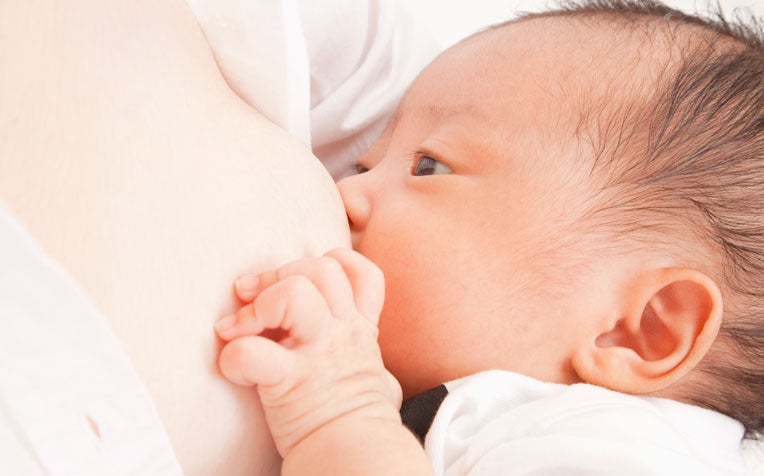
Mastitis & blocked (plugged) ducts should not stop you from breastfeeding or expressing milk, as this could worsen matters.
A breastfeeding woman needs to ensure that her baby is latched on properly and getting a full feed of breast milk. Poor latching and poor emptying of the breast often predispose the mother to blocked ducts and mastitis, two painful conditions common during breastfeeding.
“Proper attachment will ensure effective removal of the milk from the breast by the baby. This will prevent a blocked duct and sore nipple from developing,” says Ms Cynthia Pang, Assistant Director of
Nursing and Senior Lactation Consultant from the
Lactation Clinic at
KK Women's and Children's Hospital (KKH), a member of the
SingHealth group.
How to prevent mastitis and blocked ducts
Proper latching of the baby to the areola is the best way to prevent mastitis and blocked ducts. This ensures that the baby gets a complete feed and the milk is effectively drained from the breast. If the mother is not able to breastfeed her baby, she needs to express the milk to drain the breasts.
“Avoid skipping or missing a feed. If you are unable to feed, drain your milk by expressing with your hand or a pump to avoid accumulation of the milk in the breast,” says Ms Pang. “Ensure the breasts are well drained after a feed.”
Another preventive tip is to avoid wearing a tight bra or other restrictive clothing – this may compress the breast causing inadequate drainage in one area.
Symptoms of mastitis and blocked ducts
Mastitis symptoms
Mastitis is an infection of the breast tissue which commonly occurs in breastfeeding women, though it can also occur in women who are not breastfeeding. Women who are breastfeeding can develop this condition when their nipples become sore and cracked; this allows bacteria from a baby’s mouth to enter the breast.
The symptoms of mastitis include:
Sore nipples – a break in the skin on the nipple and areola may also be present
Painful, red, inflamed wedge-shaped area on the breast, or the presence of red streaks over the affected area
Fever of more than 38.5 degrees Celsius
Chills, body aches and flu-like symptoms
Blocked (plugged) ducts symptoms
Unlike mastitis, a blocked duct is not an infection. It is not as painful and is not usually associated with fever. It occurs when there is incomplete drainage of breast milk, causing a temporary lump or mass to form in the breast. “Blocked ducts when not treated promptly can progress to mastitis,” says Ms Pang.
The symptoms of blocked ducts include:
Painful, hard lumpy area in the breast – it may be associated with the presence of a small milk blister (bleb) on the surface of the nipple
Reduced milk flow from the affected breast
“In the case of blocked ducts, the lumpy area usually does not appear inflamed or reddened. Fever and systemic symptoms such as body ache are generally not present,” says Ms Pang.
For tips to manage mastitis and blocked ducts, and when to see a doctor, read the
next page.
Ref: S13
Other articles you may be interested in:
Care After Delivery (Postpartum Care)
Tips to Care for Your Baby (Newborn to 18 Months)
Health Checks for Mums (From Birth to 18 Months)
Contributed by















 Get it on Google Play
Get it on Google Play